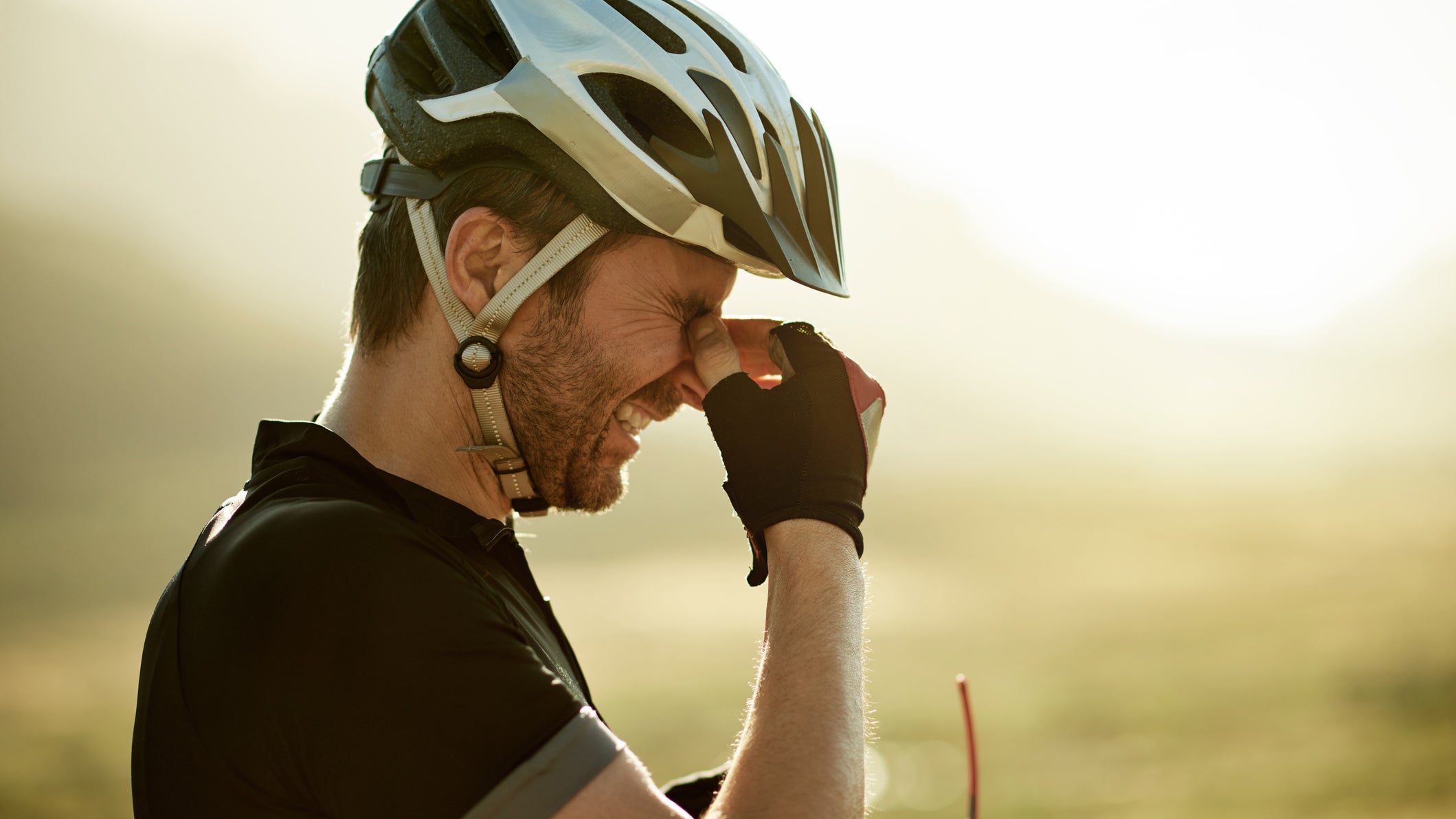Why Do I Get Dry Eyes While Riding?

The feeling of the wind in your face is one of the best parts about riding a bike. The resulting dry eyes while riding? Not so much. Cycling, especially at high speeds, downhill, or into a headwind, can put a full blast of air on your face, disrupting the balance of moisture in your eyes. That, coupled with what’s in the air—dust, pollen, and exhaust fumes—can lead to dry eye, a catchall term for redness, pain, irritation, light sensitivity and/or a sandy or gritty sensation under the eyelid. At best, dry eye is an annoyance; at worst, it can lead to scarring, infection, and loss of vision.
“There is a tear film on the front surface of the eye consisting of three layers: an oil (lipid) layer, a water (aqueous) layer and a mucin layer,” explained Dr. Steve Rosinski, a professional triathlete and practicing Doctor of Optometry based out of Charlottesville, Virginia. “Windy conditions decrease tear volume on the front surface due to increased tear evaporation. When tears evaporate too quickly from the eyes, symptoms of dry eye can develop.”
This is exacerbated when cyclists choose not to wear sunglasses or a face shield, as direct wind exposure can be extremely irritating to the eyes. But even those who do wear eye protection aren’t fully covered. Most wraparound sunglasses keep the wind out to some degree, but still leave gaps at the sides, top, and bottom of the lenses. As a result, the airflow hits your eyes, making them feel dry and sore. If you’re wearing contact lenses instead of prescription sunglasses, that’s another factor that can affect your tear production, as half of contact lens wearers develop dry eye.
What you do off the bike matters, too. Rosinski said that though wind on the bike is an obvious cause of dry eyes while riding, further investigation of an athlete’s lifestyle may identify underlying factors that put your tear production at a disadvantage before a ride even starts. Dehydration is a big one, with research showing direct links between whole-body hydration and eye hydration. Medication can play a role too, as some prescription and over-the-counter treatments for hypertension, allergies (antihistamines and decongestants), hormone regulation, and mental health list dry eyes as a side effect.
You can also blame your screens for fostering the perfect environment for dry eyes. When you stare at a computer or TV, you blink with less frequency, depriving your tear film of much-needed replenishment. To circumvent this issue, Rosinski recommends following the 20/20/20/20 rule: When you’re on a digital device, set a timer to repeat every 20 minutes. When it beeps, take a 20 second break, look 20 feet away, and blink 20 times.
If dry eyes are a regular occurrence on the bike, Rosinski said a little help may be warranted. “Artificial tears can also be helpful by placing in a jersey pocket, special needs bag or in transition.” These eye drops, available over the counter, are used to lubricate dry eyes and help maintain moisture on the outer surface of your eyes. You may need to try several different brands before you find one that works best for you, and it’s recommended to test them out several times before taking one on a ride, as some artificial tears may cause blurred vision.
The most important way to treat dry eyes, however, is to prevent them from happening in the first place, said Rosinski: “Take a proactive approach in the health of your eyes.”
Tips to Prevent Dry Eyes While Riding
Follow these tips to keep your eyes moist and comfortable:
- Wear wraparound sunglasses or a face shield to protect your eyes from the wind and reduce tear evaporation. Consider sunglasses with foam seals, which are designed to further protect the eyes from wind, dust, and pollen.
- Use artificial tears throughout the day if you are prone to dry eyes. Carry a bottle on your bike in your jersey pocket for rapid mid-ride treatment.
- Stay hydrated on the bike. When you’re not riding, drink eight to 10 glasses of water every day.
- Follow the 20/20/20/20 rule (above) when you use your phone or computer, watch TV or play video games.
- Eat a diet rich in Omega-3 fatty acids (fish, flaxseeds, walnuts) or consider a supplement. Research suggests that taking an omega-3 fatty acid supplement may reduce symptoms of dry eyes.